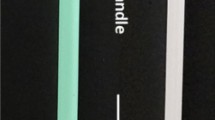Abstract
It is important that contamination from extraneous DNA should be minimised on items used at crime scenes and when dealing with exhibits within the laboratory. Four sterilisation techniques (UV, gamma and beta radiation and ethylene oxide treatment) were examined for their potential to degrade contaminating DNA to such an extent that subsequent DNA profiling was impossible. This work indicated that the most successful technique to reduce DNA contamination was ethylene oxide treatment. Of the radiation techniques tested in this study, gamma was the most successful at eradicating DNA and UV radiation was the least. None of the contaminated samples treated with ethylene oxide and subsequently subjected to DNA analysis met the DNA profile criteria necessary for acceptance on the UK National DNA Database. Contaminated cotton swabs and micro-centrifuge tubes treated with ethylene oxide showed a marked decrease in amplifiable DNA post-treatment. Ethylene oxide treatment to sterile swabs and tubes did not significantly affect subsequent DNA analysis.


Similar content being viewed by others
References
Clayton TM, Whitaker JP, Sparkes R, Gill P (1998) Analysis and interpretation of mixed forensic stains using DNA STR profiling. Forensic Sci Int 91:55–70
Andreasson H, Nilsson M, Budowle B, Frisk S, Allen M (2006) Quantification of mtDNA mixtures of forensic evidence material using pyrosequencing. Int J Legal Med 120:383–390
Sullivan K, Johnson P, Rowlands D, Allen H (2004) New developments and challenges in the use of the UK DNA database: addressing the issue of contaminated consumables. Forensic Sci Int 146 Suppl:S157–S176
Deragon JM, Sinnett D, Mitchell G, Potier M, Labuda D (1990) Use of gamma irradiation to eliminate DNA contamination for PCR. Nucleic Acids Res 18:6149
Withrow AG, Sikorsky J, Downs JC, Fenger T (2003) Extraction and analysis of human nuclear and mitochondrial DNA from electron beam irradiated envelopes. J Forensic Sci 48:1302–1308
Castle PE, Garcia-Closas M, Franklin T, Chanock S, Puri V, Welch R, Rothman N, Vaught J (2003) Effects of electron-beam irradiation on buccal-cell DNA. Am J Hum Genet 73:646–651
Hall A, Ballantyne J (2004) Characterization of UVC-induced DNA damage in bloodstains: forensic implications. Anal Bioanal Chem 380:72–83
Sweet D, Lorente M, Lorente JA, Valenzuela A, Villanueva E (1997) An improved method to recover saliva from human skin: the double swab technique. J Forensic Sci 42(2):320–322
Tamariz J, Voynarovksa K, Prinz M, Caragine T (2006) The application of ultraviolet irradiation to exogenous sources of DNA in plasticware and water for the amplification of low copy number DNA. J Forensic Sci 51:790–794
Acknowledgments
The authors would like to thank the volunteers that donated samples for this work. The authors acknowledge the work and advice from Michael Turner and Tim Lester from Isotron, UK. Some of this work was conducted by KS and NB as part of their MSc Forensic Science, King’s College, London project conducted with the Metropolitan Police Service. The authors thank the staff at LGC Forensics, Teddington, UK for their invaluable help. The authors acknowledge the expertise and use of equipment provided by Dr. Matthew Arno, Genome Centre, King’s College, London.
Author information
Authors and Affiliations
Corresponding author
Rights and permissions
About this article
Cite this article
Shaw, K., Sesardić, I., Bristol, N. et al. Comparison of the effects of sterilisation techniques on subsequent DNA profiling. Int J Legal Med 122, 29–33 (2008). https://doi.org/10.1007/s00414-007-0159-5
Received:
Accepted:
Published:
Issue Date:
DOI: https://doi.org/10.1007/s00414-007-0159-5




